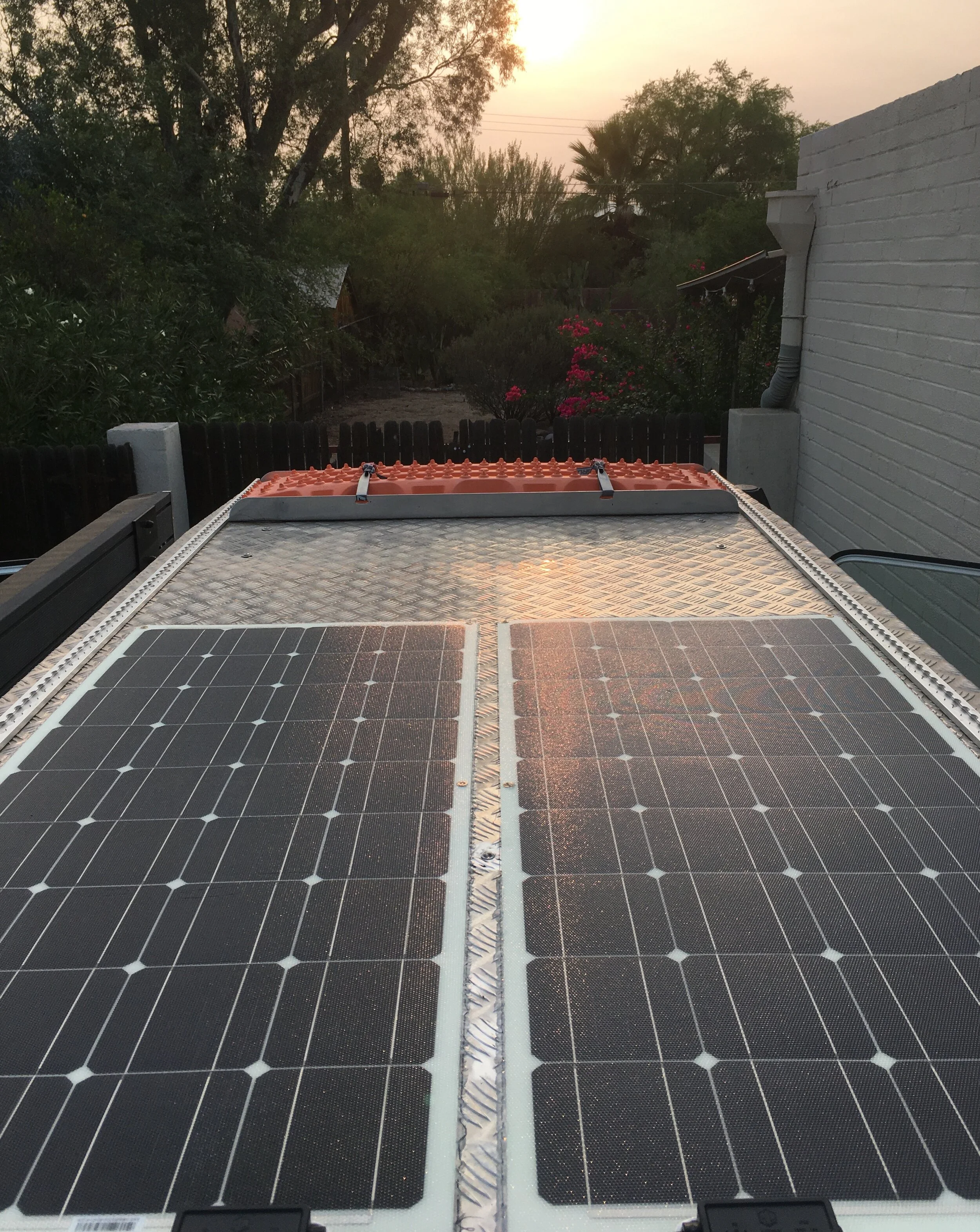Solar power upgrade . . . preview
A smoky rising sun about to start energizing the Renogy panels
Above is a preview of a significant project we’re undertaking on our 1993 Troop Carrier, to upgrade its electrical supply system. The first step was to replace the single 100-watt panel originally mounted on the Mulgo pop-top with a pair of Renogy semi-rigid 100-watt monocrystaline units. They are secured to the five-bar aluminum checkerplate of the top with Sikaflex 221 adhesive, and bordered with clear silicone caulk. On our Four Wheel Camper we found that a 200-watt solar array was enough to run all the vehicle’s equipment—fridge, lights, etc.—as well as both our laptops and all our camera charging equipment, without resorting to the engine as long as days were mostly sunny. And the efficiency of PV panels continues to improve: Even half covered with solid shade, each of these Renogy panels will still produce 10-15 watts.
To come is an in-depth look at our dual-battery setup. Hint: This will likely involve some exciting lithium technology on the way from Antigravity Batteries, makers of the brilliant Microstart.
Coverting a 12V system from lead-acid to lithium batteries isn’t as simple as dropping them in and hooking up cables. Lithium cells require a specific charging regimen, without which their lifespan can be shortened.
The upsides? First, of course, is the idea of a battery weighing perhaps 25 pounds replacing one weighing 75—an instant 100 pounds taken off the vehicle in a dual system. Far more important, however, is a hugely extended lifespan, as well as hugely increased power density and availability. Can that offset the hugely increased initial cost? We want to find out.
Of concern to anyone contemplating a switch to lithium batteries is the infamous fire danger. Suffice to say that this is strictly a function of the design and quality of the battery—cheap lithium batteries comprise little more than many small cells linked together; expensive ones employ prismatic cells that are individually encased, and controlled by an internal regulator system.
I’m looking forward to exploring this emerging technology.

